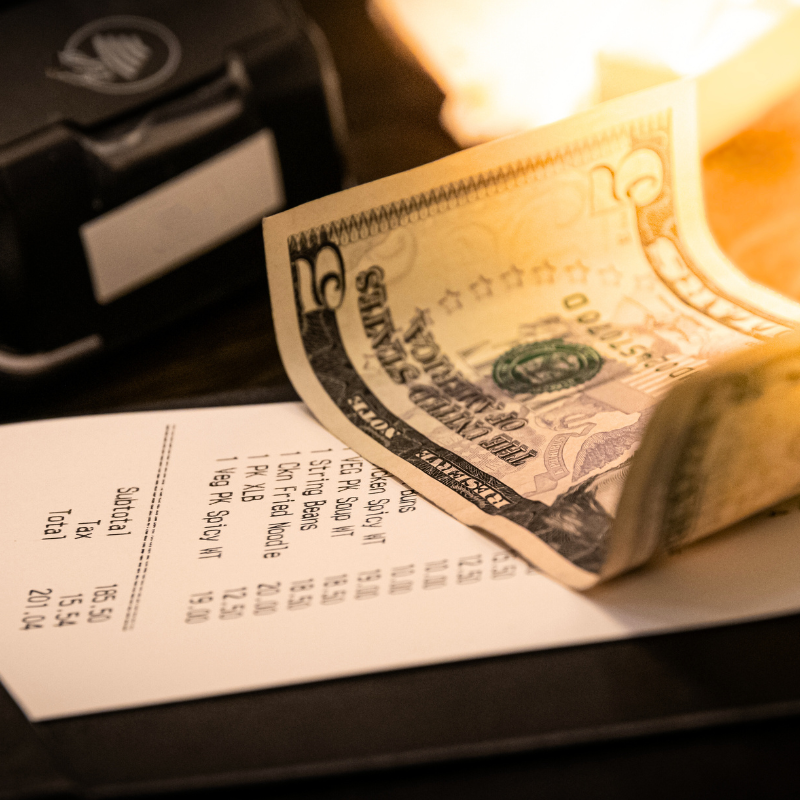During the November 3 elections, Florida approved a change to its Amendment 2, also known as the Minimum Wage Initiative (2020). The effect of this initiated constitutional amendment will gradually increase the minimum wage over the next 5 years as follows:

How Will This Impact Restaurants?
This initiated constitutional amendment will have impacts that both restaurants and consumers will experience.
Restaurants will be directly affected by increasing operating costs. The raising of minimum wage by approximately 75% during the next 5 years will require restaurants to consider different strategies to retain their profit margins, or in more severe cases, keep their restaurants open. Similar $15 minimum wage initiatives have been adopted across the United States. They have proven to lead to many restaurant owners closing their doors, especially small restaurant owners who cannot absorb the increased operating costs, unlike major corporations.
As is the norm, most restaurant businesses are already under heavy pressure to operate under slim profit margins. Passing along the wage increases to customers, in the form of price increases, will be inevitable. A goal will be to lessen the rate at which prices are escalated. To combat customers suffering from Sticker Shock and, in turn, eating out less, finding resources for cost savings will be a crucial endeavor to maintain a sufficient amount of guests.
While restaurant sales still have not fully recovered from the pandemic’s effect, businesses will now have to payout significant additional amounts for staffing. Coupled with the wage increases, restaurants are also spending on COVID-19 safety protocols to keep our front line workers and guests safe. Attracting quality employees willing to perform a front line work position is increasingly important and increasingly difficult. With increasing unemployment, price sensitivity experienced by guests will be magnified.

Strategies to Manage Wage Increases:
The most common factor that chwaste audit. A waste audit will show you where to focus your attention when planning for the future.
Another point for consideration is menu streamlining. With menu streamlining, the goal is to focus on your strengths. The theme here will be to eliminate items with higher prep errors, lower guest satisfaction, and lower profit margins. For example, during COVID-19, the cost of beef has significantly risen; if you struggle to make a tasty Ruben sandwich and hold products that can only be used on the Ruben, such as sauerkraut and rye bread; time to 86 (remove) this one. This concept can typically be applied to seasonal menu items.
Sorry, Johnny, you’re cut from the floor, but you can’t leave until your new side work assignments are done. Longer employee shifts are proven to increase efficiencies and productivity. Similarly, determining if it is worth-while to stay open on certain slower shifts, such as a Monday lunch at a steak house, might be a hard decision to make but could result in cost savings at the same time. Creating a visual chart of weekly sales over-layed with costs, week-over-week, by day, may provide some much-needed data to help with this decision making on shift management.
App-based food order and delivery systems are other methods to help fill some of the lost production capacity. Your restaurant can implement a web-based food order and delivery system itself. The following are a few 3rd party food apps that, if you haven’t already subscribed to, you should consider providers such as DoorDash, GrubHub, Uber Eats, Seamless, Postmates, goPuff, Delivery.com, and Instacart (all available on both Android and iOS).
Before proceeding with a third-party provider, we recommend a cost-benefit analysis to fully understand the delivery fee’s impact on your profit margin.
While the overarching goal for all restaurant owners is to get close to understanding costs surrounding your operations to make sound decisions for controlling costs, keeping an eye on service and customer experience is equally important. Maximize your service offerings at your higher margins, but continue to be creative with your menu offerings while controlling waste. Don’t forget that atmosphere plays an important role and server experience. Offer the highest customer service level, whether it be phone, online, or in person contact. Operate within optimal hours to drive traffic, and use social media by offering promotions and informing customers of new menu items for indoor, outdoor, and delivery experience. This is a great way to show your customers you value them and create a great customer experience. Ask for customer feedback, and don’t be afraid to try new ideas.
Authors: William Kloppe, CPA, MSA, [email protected] | Adam Terry, [email protected]
Consumer Products Team.
Consumer Products



